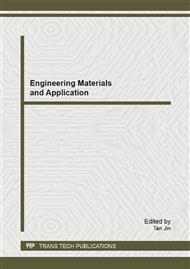p.470
p.474
p.480
p.486
p.492
p.499
p.505
p.511
p.517
The Effect of Electrode Parameters on Lead-Acid Battery Performance
Abstract:
The investigation of design parameters is greatly helpful to use the optimum capacity of an electrochemical cell, which can be obtained from both experimental and numerical methods. In this study, a lead-acid battery has been simulated numerically using the CFD commercial software package FLUENT. The governing equations, including conservation of charge in solid and liquid phases and conservation of species, are solved by creating user defined functions. The effect of some basic parameters such as electrode porosity, discharge current density and width of the electrodes on the cell voltage behavior of a lead-acid battery is investigated. It has been shown that the increasing of the thickness and porosity of the PbO2 electrode has more pronounced effect on the performance of battery than the Pb one.
Info:
Periodical:
Pages:
492-498
Citation:
Online since:
January 2013
Keywords:
Price:
Сopyright:
© 2013 Trans Tech Publications Ltd. All Rights Reserved
Share:
Citation:


